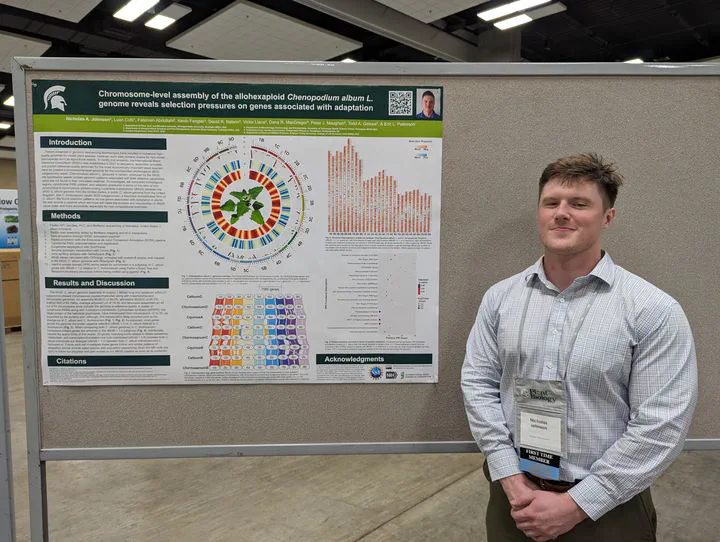Chromosome-level assembly of the allohexaploid Chenopodium album L. genome reveals selection pressures on genes associated with adaptation
Jun 24, 2024· ,,,,,,,,,·
0 min read
,,,,,,,,,·
0 min read
Nicholas A Johnson
Luan Cutti
Fatemeh Abdollahi
Kevin Fengler
David R. Nelson
Victor Llaca
Dana R. MacGregor
Peter J. Maughan
Todd A. Gaines
Eric L. Patterson
 Poster presentation by Nicholas A. Johnson at Plant Biology 2024
Poster presentation by Nicholas A. Johnson at Plant Biology 2024Abstract
Recent advances in genomic sequencing technologies have resulted in numerous high-quality genomes for model plant species, however, such data remains scarce for non-model plant species such as agricultural weeds. To rectify this limitation, the International Weed Genomics Consortium (IWGC) was established in 2021 to sequence, assemble, annotate, and publish reference-quality genomes for the most economically important weed species1. Here we present a chromosome-level genome for the cosmopolitan allohexaploid (BCD subgenomes) weed, Chenopodium album L., produced by the IWGC. We hypothesize weeds contain genomic patterns associated with their adaptive capabilities which are not found in their non-weed relatives. To investigate, we compared homologous regions, cytochrome P450 content, and selection pressures in terms of the ratio of non-synonymous to synonymous protein-coding nucleotide substitutions (dN/dS) between the IWGC C. album genome from the United States, a public C. album genome from the United Kingdom, and C. formosanum (djulis; BCD subgenomes), a theorized domesticated form of C. album. We found selection patterns across genes associated with adaptation in plants. We also provide a pipeline which we hope will make the analysis and visualization of dN/dS values faster and more accessible, especially for non-computational scientists.
Date
Jun 24, 2024 1:00 PM
Event
Location
Hawai’i Convention Center
1801 Kalākaua Avenue, Honolulu, HI 96815